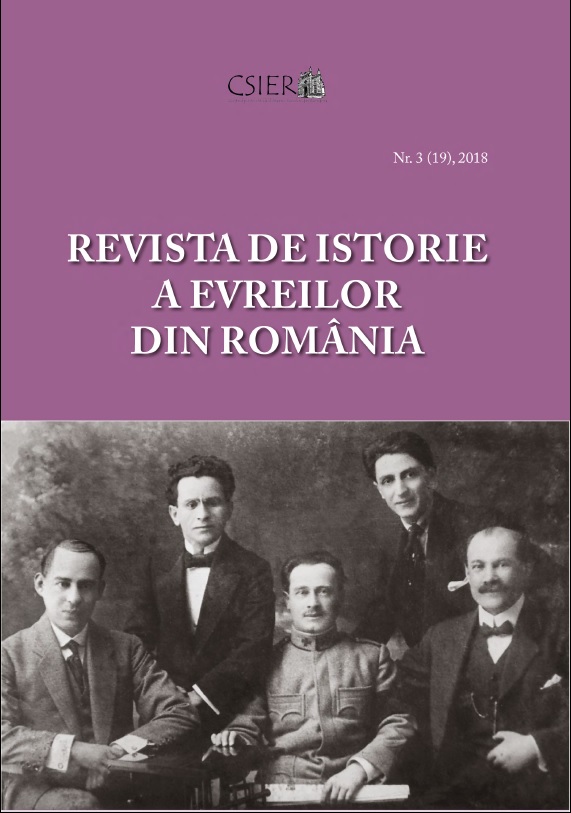
We kindly inform you that, as long as the subject affiliation of our 300.000+ articles is in progress, you might get unsufficient or no results on your third level or second level search. In this case, please broaden your search criteria.


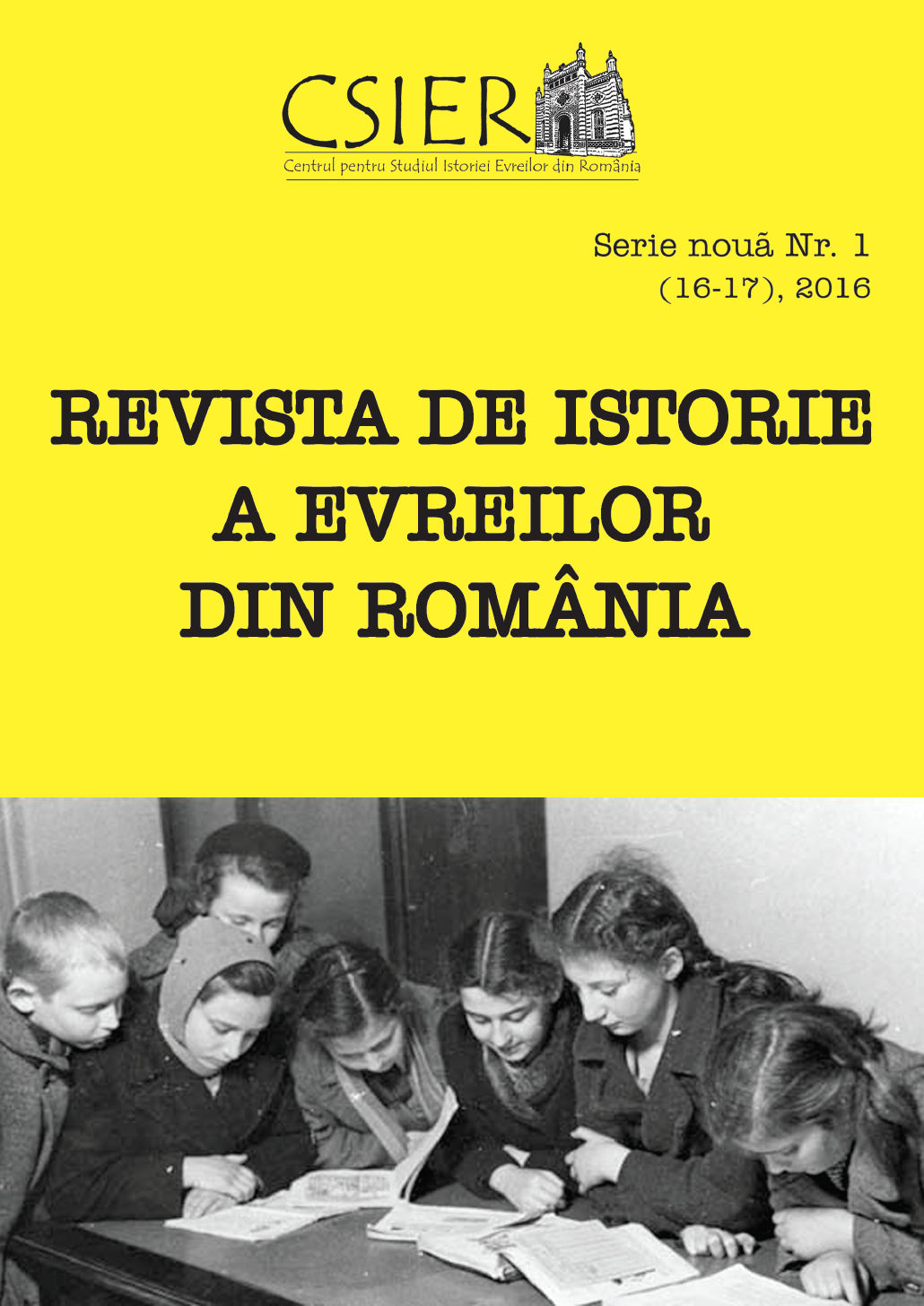
This article deals with photographic legacy of Herbert Seligmann (1891-1984). Between 1936-1938 the photographer worked as the Publicity Director of the American Jewish Joint Distribution Committee and he had an opportunity to observe Jewish life in the countries of Eastern Europe where JDC functioned at that time. Following his papers dispersed in JDC Archives and in the Manuscript Division of the New York Public Library we were able to reconstruct his journey through Eastern Europe. JDC Archives is proud to present today, after 80 years from the date of the first publication, Seligmann’s images taken in Romania, mostly unknown for general public.
More...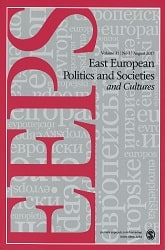
This article discusses local cultures of remembrance of Yugoslav partisans fallen during World War II in Trieste, now part of Italy, and investigates the role of memory activists in managing vernacular memory over time. The author analyses the interplay between memory and the production of space, something which has been neglected in other studies of memory formation. On the basis of local newspaper articles, archival material, and oral interviews, the essay examines the ideological imprint on the local cultural landscape, contributing to a more complex understanding of memory engagement. The focus is on grassroots initiatives rather than state-sponsored heritage projects. This article argues that memory initiatives are not solely the outcome of national narratives and top–down ideological impositions. It shows that official narratives have to negotiate with vernacular forms of memory engagement in the production of a local mnemonic landscape.
More...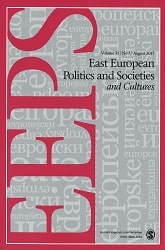
By appearance it would seem that Rodziny Katyńskie—the Katyń Families—are a veterans’ organization. The elderly, the last witnesses of the terrible Second World War, make up the majority of members. But these are not heroes, and they are not veterans. Who are they? In the first days after Poland regained its independence, after the first free elections of 4 June 1989, people from many cities leave the quiet of their homes and for the first time in their lives start talking about the history of their fathers, who had gone missing after 17 September 1939. The Katyń Families were formed. Statutes were written, and the aims of the organization were defined: explaining all of the circumstances of the Katyń Massacres, finding all of the locations where Polish prisoners of war died, and, finally, accomplishing their dignified burial in Polish War Cemeteries.
More...
The Polish case of Janowiec and Others v. Russia was initiated by a group of close relatives of victims of the 1940 Katyń Massacres. Only in 1990 did the Soviet Union recognize that it had perpetrated the massacres. The applicants in the Janowiec case alleged that the Russian investigation into the massacres, which commenced in 1990 as transparent proceedings but was terminated in 2004 in secrecy, cannot be considered effective under the Convention. Furthermore, inasmuch as the Russian military prosecutors and courts held that the Polish prisoners-of-war “had disappeared” in the spring of 1940 or—if “hypothetically” killed—there might have existed just cause for such an execution, the applicants complained that such statements denied established historical facts and were tantamount to the denigrating and inhuman treatment prohibited by the Convention. The Grand Chamber judgment was not in the applicants’ favor. By a majority, the judges either declined to hear the case on its merits or held that there had been no violation of the Convention, turning—as the four minority judges wrote in their dissent—“the applicants’ long history of justice delayed into a permanent case of justice denied.” This article is a personal account of the principal lawyer acting on behalf of the applicants in the Janowiec case.
More...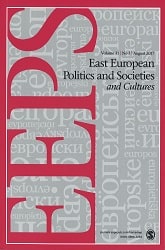
In the past few decades, Poland has seen a growing number of attempts to reclaim its Jewish past through traditional forms such as historiographic revision, heritage preservation, and monument building. But a unique new mode of artistic, performative, often participatory “memory work” has been emerging alongside these conventional forms, growing in its prevalence and increasingly catching the public eye. This new genre of memorial intervention is characterized by its fast-moving, youthful, innovative forms and nontraditional venues and its socially appealing, dialogic, and digitally networked character as opposed to a prior generation of top-down, slow moving, ethnically segregated, mono-vocal styles. It also responds to the harsh historical realities brought to light by scholars of the Jewish-Polish past with a mandate for healing. This article maps the landscape of this new genre of commemoration projects, identifying their core features and investigating their anatomy via three case studies: Rafał Betlejewski’s I Miss You Jew!; Public Movement’s Spring in Warsaw; and Yael Bartana’s Jewish Renaissance Movement in Poland. Analyzing their temporalities, scopes, modalities and ambiences, as well as the new visions for mutual identification and affiliation that they offer Poles and Jews, we approach these performances not as representations, but rather as embodied experiences that stage and invite participation in “repertoires” of cultural memory. Different from simple reenactments, this new approach may be thought of as a subjunctive politics of history—a “what if” proposition that plays with reimagining and recombining a range of Jewish and Polish memories, present-day realities, and future aspirations.
More...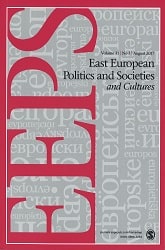
For the vast majority of Americans, the mention of Warsaw conjures up images of the Holocaust and World War II. In comparison with other Central European capitals such as Berlin, Budapest, Prague, and Vienna, Warsaw remains fixed as a site of wartime suffering and destruction in English-language publications. In part, these impressions stem from the fact that interwar Warsaw was a major center of Ashkenazi Jewish culture, and stories of this center’s flourishing and destruction attract the largest number of American readers. Because the Holocaust relentlessly reduced this Jewish center to a ghetto and then a ghost town, tributes to the Polish Jewish dead and memoirs of the Holocaust’s survivors naturally dominate Englishlanguage tales of the city.
More...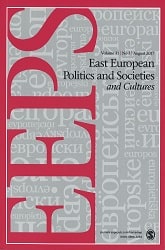
The Holocaust in Nazi-occupied Poland had several phases. First, Jews were marked with the Star of David badge, then isolated in ghettos, and—at the end—they were murdered in the extermination camps. But thousands of Jews had managed to escape both from ghettos and from camps. Often they were jumping from the trains going to Treblinka, or—after surviving a shooting—escaping from a mass grave. All of them wanted to survive the war. Some tried to stay in the cities; others were looking for help in the countryside. The article is about those Jews who wanted to live through the war among Polish peasants but were betrayed, denounced to the Germans, or murdered.
More...
This article concerns some characteristics of the so-called third stage of the annihilation of Polish Jewry during World War II, after sending most of them to the killing centers. That phase consisted of individual—not mass—murder that took place “among Poles” and before their eyes, frequently with their participation, when Jewish refugees attempted to hide from persecutors or blended into the anonymous crowds of the larger cities (on the so-called Aryan side) or hid in hardly accessible rural areas poorly controlled by the German police. Most hiding Jews were hunted down and murdered by special Kommandos of the German gendarmerie in the first weeks following deportations in a given area. Unprepared for hiding for an extended period, they found hideouts and trusted their financial means to Polish friends. In my opinion, in 80 to 90 percent of the cases, Poles rescued Jews for money or other material gain, and when the funds (or other valuables) were exhausted, the attitude to those rescued changed radically. The purpose of this article is to present an outline of how a certain structure functioned—the “Night Guard” (peasant or rural, part of the occupation-era administrative and coercive apparatus), which can be found in wartime historical sources and in the immediate postwar investigation and trial files based on the August Decree of 1944 (on account-settling with the past regarding collaboration with the German occupier) as well as in testimonies of Jewish survivors. The guards were obliged to hunt hidden Jews, and the score of their activity was very high.
More...
During the Second World War, Polish underground organizations created a catalogue of behaviors that qualified as treason against the Polish nation. The rules covered everyday behaviors as well as boycotts of the press, cinema, theater, and the German language. These guidelines—appearing in both codified form and as articles and judgments printed in the underground press—constituted the discourse on treason in occupied Poland. The article presents this discourse, describing its main problems and modifications during the occupation period in an attempt to encompass all spheres of social, cultural, and economic life.
More...
Although the starting point for all the Polish postwar pogroms (save for one) was a blood libel, this particular motif did not attract the historians’ attention until recently. Theories on plots devised by “Soviet advisors” or “Zionists” enjoyed an incomparably greater popularity. This article, based upon the documentation of the Rzeszów and Kielce pogroms, the most recent ethnographic resources (2005–2009), the documentation used in Marcel Łoziński’s documentary Świadkowie (The Witnesses; made in 1980s), and an intensive search at the National Remembrance Institute (IPN), reveals a uniform social-mental formation of those partaking in the pogroms—the attackers and militiamen disciplining them, public prosecutors, and judges. All of them—including militiamen and Security Service officers—were subject to a blood libel suggestion. Traces of this thread have survived till this day in some segments of Polish society—not only in the countryside population, despite any appearances. This article aims at showing how an anti-Jewish alliance was getting formed in the first years after the liberation, on the grounds of a gradually strengthening “Polish national socialism,” and along with it, a synthesis of religious anti-Semitism (Jew as a “kidnapper/bloodsucker”) and a modern anti-Semitism (Jew as a “capitalist/bloodsucker” and “Judeo-communists” contaminating a sound national/party organism).
More...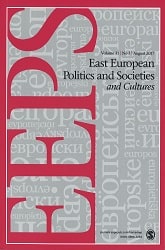
Although almost all of us are too young to remember anything of the 1940s, we are nevertheless condemned to live in memory cultures that begin with the Second World War and its victims. Historians, especially those who take as their subjects Germany and Russia and the lands between, must somehow negotiate the slippery territory between memory cultures and historical scholarship. One approach is to treat the memory cultures themselves as an object of study, as do Alexandra Goujon and David Marples in the essays published here. [...]
More...
The memory of WWII always played an important role in Belarus, which was characterized as a “Partisan Republic” during the Soviet time. Soviet historiography and memorial narrative emphasized the heroics of the resistance to fascism and allowed only a description of the crimes of the Nazis. New ways of looking at war events appeared during the perestroika and after the independence of the country. But after Alexander Lukashenko came to power as president in 1994, a neo-Soviet version of the past was adopted and spread. The Great Patriotic War (GPW) has become an increasingly publicized event in the official memorial narrative as the culminating moment in Belarusian history. Since the mid-2000s, this narrative tends to be nationalized in order to testify that the Belarusian people’s suffering and resistance behavior were among the highest ones during WWII. Political and academic dissenting voices to the Belarusian authoritarian regime try to downplay this official narrative by pointing out that the Belarusians were also victims of the Stalinist repression, and their attitude towards the Nazi occupation was more than ambivalent. Behind the memorial discourses, two competitive versions of Belarusian national identity can be distinguished. According to the official version, Belarusian identity is based on the East-Slavic identity that incorporates the Soviet history in its contemporary development. According to the opposition, it is based on a national memory that discards the Soviet past as a positive one.
More...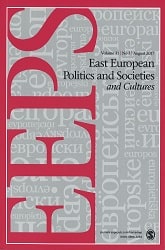
While the term Eastern Europe gained great currency in Europe and the United States as a result of the cold war, the experiences that made Eastern Europe different have to do with both the Soviet Union and Nazi Germany, and with their mutual triumph on a certain part of the continent. If this thesis can be defended, it would follow that the term Eastern Europe has a deeper historical significance than is generally accepted, and that certain differences in historical memory in eastern and western Europe transcend the experience of the cold war. [...]
More...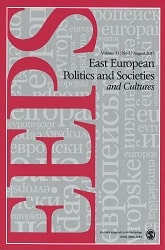
In recent years, the historiography of Jewish-Polish relations after the Holocaust has often shown a marked tendency to trace the conflict between these peoples to the central role of Jews in the new communist ruling system. Poles murdered hundreds of Jews, mainly in 1944 to 1946, for various reasons—some ideological, others economic. The collective guilt that the Polish political right and some of Polish society assigned to the Jews, however, proves to be inaccurate when one examines the community of Jewish survivors who gathered in the Lublin district, the first area to be liberated from Nazi occupation (summer of 1944). Most survivors were roundly disinterested, let alone involved, in politics, and the issue of communism in Poland was totally alien to them. Their main concerns had to do with family property that had been abandoned during the deportations, an attempt to locate lost family members, and, above all, an effort to reengage with the life that the Nazi bloodbath had broken off. They were stunned to confront the intensity of Polish society’s resentment and hostility toward them and the governing authorities’ bureaucratic indifference. The conflation of these two factors prompted many to abandon their prior places of residence, to move to new areas of settlement, or to leave Poland forever.
More...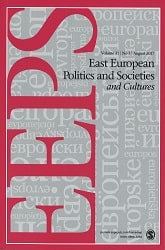
Post-Soviet Russia, the early Third Republic in France, and the Weimar Republic in Germany can be understood as cases of “postimperial democracy”—a situation in which a new democratic regime emerges in the core of a former empire that has suddenly collapsed and where democratic elections continue for at least a decade. However, the regimes consolidated in these cases—republican democracy in France, Nazi dictatorship in Germany, and weak state authoritarianism in Russia—vary dramatically. These divergent results reflect the impact of new ideologies, which generated collective action among converts by artificially elongating their time horizons in an environment of extremely high uncertainty. In France, ideological clarity allowed radical republicans to outflank more pragmatic parties; in Germany, ideological clarity allowed the Nazis to mobilize more successfully than centrist parties; and in post-Soviet Russia, the absence of any compelling new political ideology—democratic or antidemocratic—has rendered political parties too weak to challenge even a very weak state.
More...
The review of: România şi Transnistria: Problema Holocaustului [Romania and Transnistria: The Problem of the Holocaust], by Viorel Achim and Constantin Iordache. Bucureşti: Curtea veche, 2004.
More...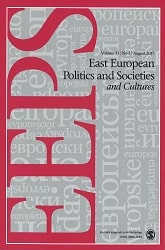
The review of: The Spring Will Be Ours: Poland and the Poles from Occupation to Freedom by Andrzej Paczkowski. Translated by Jane Cave. University Park: Pennsylvania State University Press, 2003. pp. 600 + xv, appendix, biographical notes, bibliography, index. $39.95 (hardbound).
More...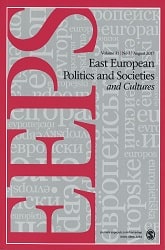
The review of: Secret City: The Hidden Jews of Warsaw, 1940-1945 by Gunnar S. Paulsson. New Haven, CT: Yale University Press, 2002. pp. 298 + xv, $29.95 hardcover.
More...